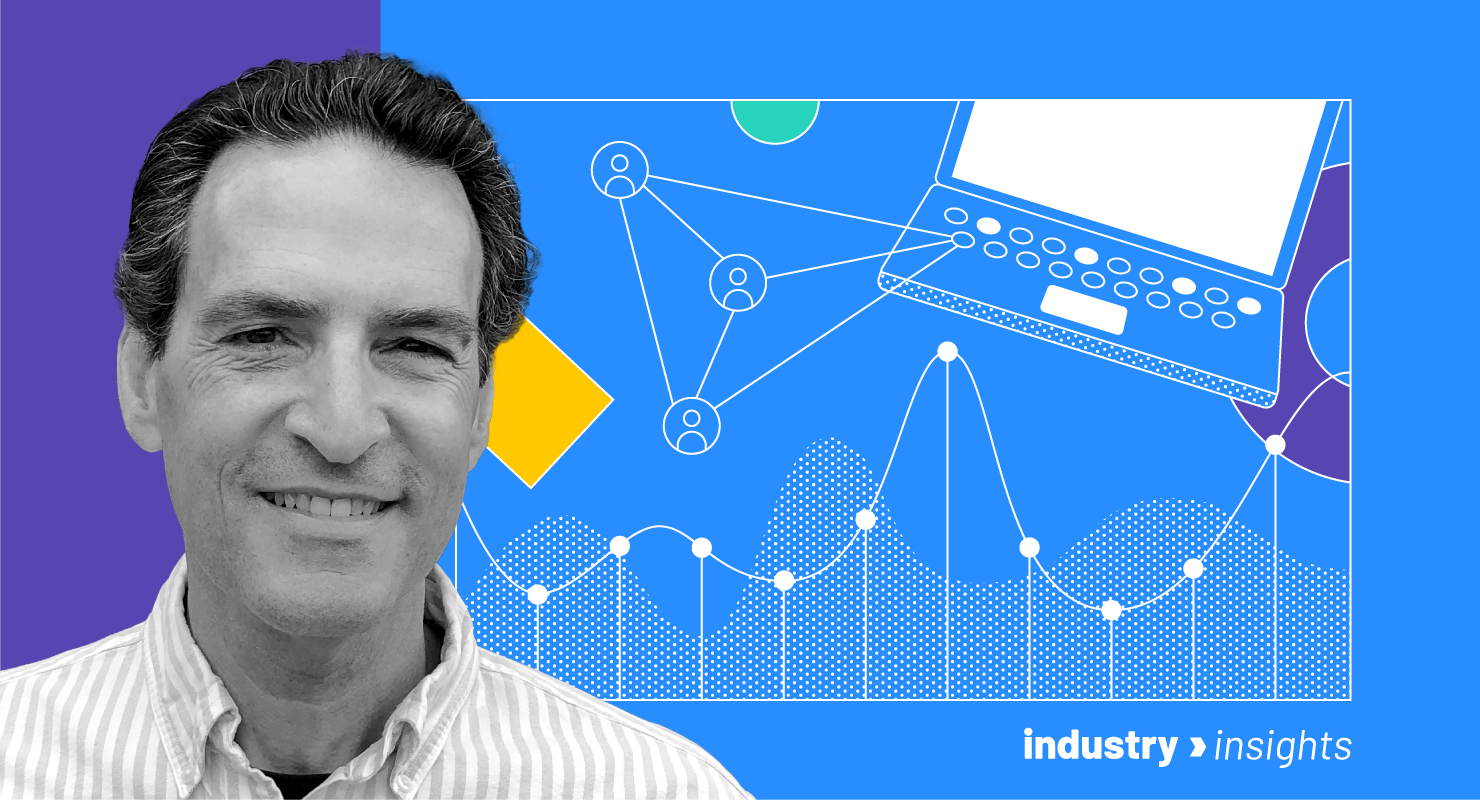July 5, 2023
 by Jeb Dasteel / July 5, 2023
by Jeb Dasteel / July 5, 2023

The volatility of the tech industry shouldn’t be a surprise to anybody.
History has taught us time and time again: technology has the power to reshape economies and lives. And between the rise in inflation and the risk of a global recession, businesses must adapt to radical environmental changes. But over the years, the pace of these changes has become unprecedented.
Over 57% of tech companies believe they won’t survive a prolonged recession. This notion posits tech companies as both the perpetrators and the victims. The mindset affects organizations and impacts people and their jobs.
Individuals can embrace technology at their own pace, but tech organizations—and big business tech consumers—don’t have the same freedom. Factors like customer expectations and market competition drive innovation and tech adoption for companies, often faster than their plans can cope. But as they say, change is inevitable.
The tech industry is constantly pushing to get ahead of expectations, and businesses often struggle to keep up. This creates complexity and pace that is often exhilarating—and often challenging.
Oracle is the 12th biggest technology company in the world, with a market cap of over $300 billion. When I joined the company in 1998, I wasn’t prepared to navigate the turbulence of the tech world. But having spent more than two decades in this industry, it’s safe to say I have witnessed technology’s transformative power and its hazards.
Join me as I walk through some insights acquired during my adventure.
The mid to late 1990s, right up to the tech bubble of 2000, marked a pivotal point for tech, and especially for Oracle. The company underwent a huge transition by expanding its offerings and solidifying its presence in an increasingly competitive arena. From being recognized as the long-time prominent player in the technologist-dominated database market, Oracle forked into the applications sector, which caters to business users and consumer-oriented experiences.
At the onset of my tenure, Oracle was on a mission to develop a stronger business and functional orientation (think sales, marketing, HR, finance, supply chain) and how it interacted with its customers. This shift aimed to equip the sales teams to demonstrate the attainment of customer outcomes and measurable value. I was among a handful of people, generally from management consulting, hired to bring this to fruition.
After launching and running Oracle’s business consulting capability for six years, I was asked to take on a brand new role in 2004. I didn’t plan for this, but I was at the right place and time with the right set of skills.
I’ve never really had a career plan. I just focused on operational excellence, innovation, and applying technology in new ways to whatever I was doing at the time.
The new mission was to spearhead the development of customer experience (CX) capabilities and foster customer advocacy for Oracle. Since my prior role revolved around putting customers at the forefront, this seemed like a great fit for me. The transition was reasonably smooth as I entered the job knowing how to grasp customer perspectives and deliver tangible results to their business.
The general outline of my new role was clear. The job was to enable customer loyalty and retention. But it was up to me to execute the best possible approach and results. While the job was bound to evolve, specific expectations and actions were, in many ways, set by the purchase of PeopleSoft, Oracle’s biggest acquisition to date.
PeopleSoft, renowned for its business applications expertise, gave Oracle a golden opportunity to expand well beyond its legacy apps business and acquire new customers (and create a better stronghold with existing customers). Oracle was acutely aware that losing PeopleSoft customers would amplify the growing clamor and consternation elicited by a big, complex acquisition.
If PeopleSoft customers jumped ship, it would bring into question Oracle’s capabilities and credibility—and likely drive the stock price down. So Oracle resolved to exert every ounce of effort to retain every last PeopleSoft customer. The challenge was no less than exceeding customer, community, employee, regulator, and Wall Street expectations all at once.
My new role required a new team, and the first order of business for the newly assembled team was to figure out the fundamentals: who we should be working with and how. We knew the “what” and the “why” but definitely not the “how”.
The good news was that we had the freedom to figure this out on our own. The bad news was that the assignment was fundamental to helping teams across the company, and those teams were pretty well convinced that they didn’t need any help. This was the textbook change management challenge for a big organization.
You can’t push strategic change without earning the right to do so—and the only way to do that is to figure out how to help those who don’t genuinely believe they need your help.
The key was to balance our strategic objectives with the right tactics to help meet closer-in business goals. That means helping close a deal, helping resolve a customer implementation challenge, or helping deliver a great print ad. It took us a while to figure this out, and as I look back, I should have solved the puzzle a bit faster. But we got there.
Larry Ellison's vision instilled a company culture of playing the long game and striving for GE-like dominance of targeted markets. Even when Oracle broadened from a database company to include apps and hardware, and then to an engineered systems company, it remained true to its core vision and values. It was challenging. There wasn't always a straight line from point A to point B, but the company learned and adapted. My team did too.
What’s the story of your team, organization, or company? You need to personalize and be able to tell the story of what you do and why you do it.
In later years, the team grew into an extension of the CEO’s office and was able to engage more in all aspects of the customer experience. At our best, we transcended traditional boundaries and worked across every part of the massive Oracle organization.
The goal was to continuously adapt to fulfill the needs of the day but to do so based on a throughline of capabilities and consistent focus. You can—and have to—do both: keep an eye on the horizon and concentrate on your next ten steps.
The last thing you want to do in a highly dynamic environment is reinvent yourself every day, week, month, quarter, or year. If you do that, even intending to " do whatever it takes," your team and stakeholders alike will lose sight of how and why you're valuable. You will never really establish a solid foundation to build on. So tell your story early and often.
One thing I could have learned faster was the importance of developing personal marketing and sales skills. We have all met that guy from corporate who is the “strategist.” There’s absolutely nothing wrong with a strong strategy. And I have no issue with philosophizing and evangelizing. But a little bit of that goes a long way.
It’s essential and up to you to find your unique way to contribute to sales, marketing, or engineering. If some aspect of your job doesn't align with the company's quarterly objectives, you may as well have a target painted on your shirt, hat, backpack, beanbag, or suit.
The line between the front and back offices is growing finer by the day. Everyone has a "front office" role to play. We all have an obligation to build, market, or sell.
Even in finance, where customer-facing activities may not feel like the norm, you can still have the mindset and create opportunities for supporting sales and marketing. A customer from a finance or operations background would love to have a how-to or inspirational conversation with a like-minded finance or ops person.
I doubt you’ll get through an hour today without reading, hearing, or talking about generative AI. Whether it’s cloud computing, personal productivity, the metaverse, or green technology, pick something that makes you at least somewhat of a futurist. Going along for the ride is great, but if you want to thrive instead of survive, play a role in guiding the way.
When I work with clients, I try to introduce them to new technologies related to and also apart from what I’m consulting on. This is part of becoming inspirational and indispensable.
Here are some of my biggest pieces of advice for a fulfilling career in tech:
Navigating the complexities of a volatile industry is both challenging and unpredictable - but by keeping these things in mind, you can place yourself in a secure position for the future.
This post is part of G2’s Industry Insights series. The views and opinions expressed are those of the author and do not necessarily reflect the official stance of G2 or its staff.
Jeb operates Dasteel Consulting, focusing on advising CX leaders, and is a founder of the Experience Alliance, a CX/EM collaborative working group. Jeb served as the global Chief Customer Officer for Oracle from early 2008 to September 2019.
The NeverEnding Story is my all-time favorite movie. If you grew up in the '80s or '90s,...
 by Sa’ar Calev
by Sa’ar Calev
Most sales outreach fails. Not because reps aren’t trying hard enough, but because they’re...
 by Alexandra Vazquez
by Alexandra Vazquez
SEO is no longer what it used to be.
 by Alexandra Vazquez
by Alexandra Vazquez
The NeverEnding Story is my all-time favorite movie. If you grew up in the '80s or '90s,...
 by Sa’ar Calev
by Sa’ar Calev
Most sales outreach fails. Not because reps aren’t trying hard enough, but because they’re...
 by Alexandra Vazquez
by Alexandra Vazquez


